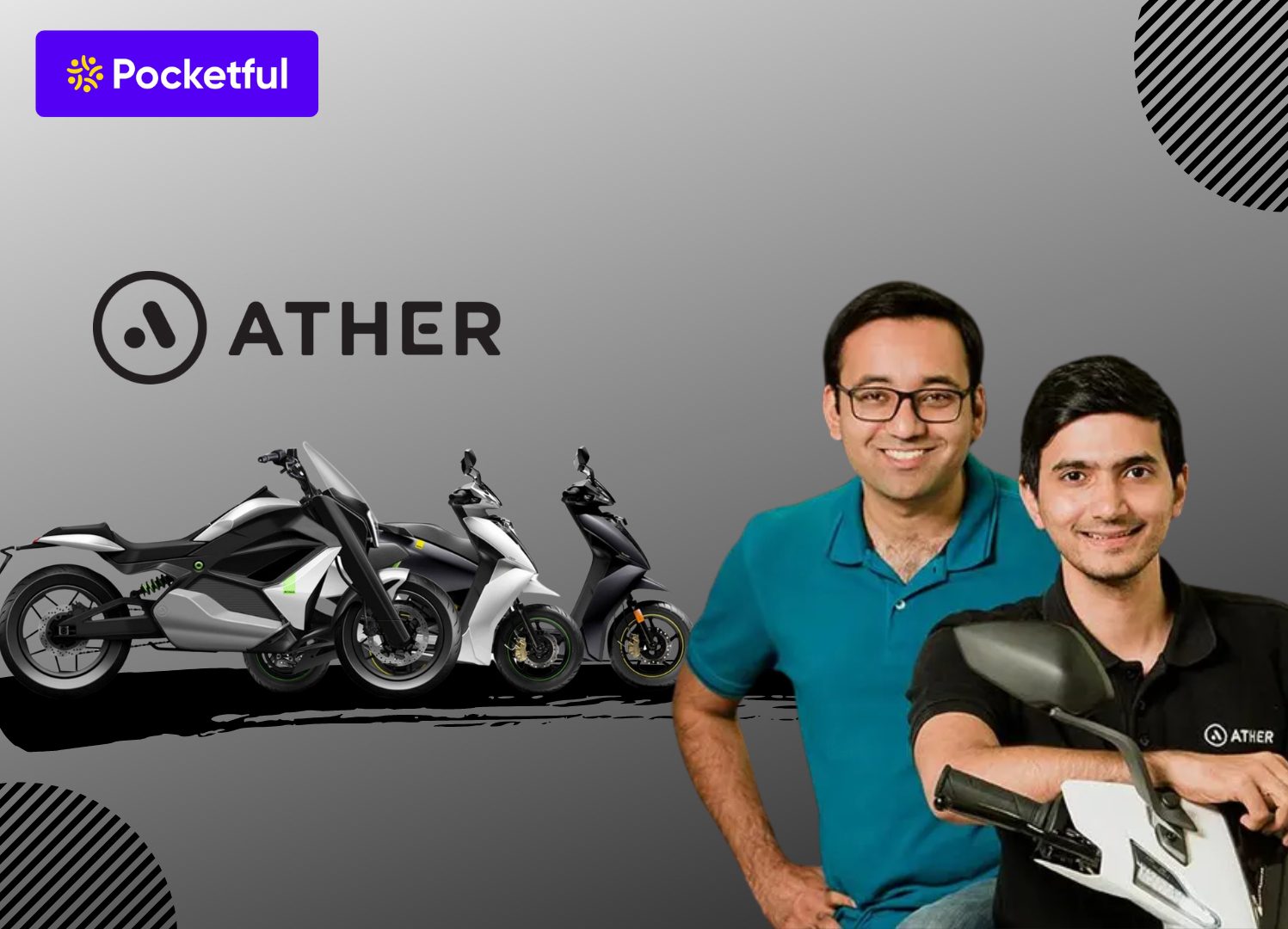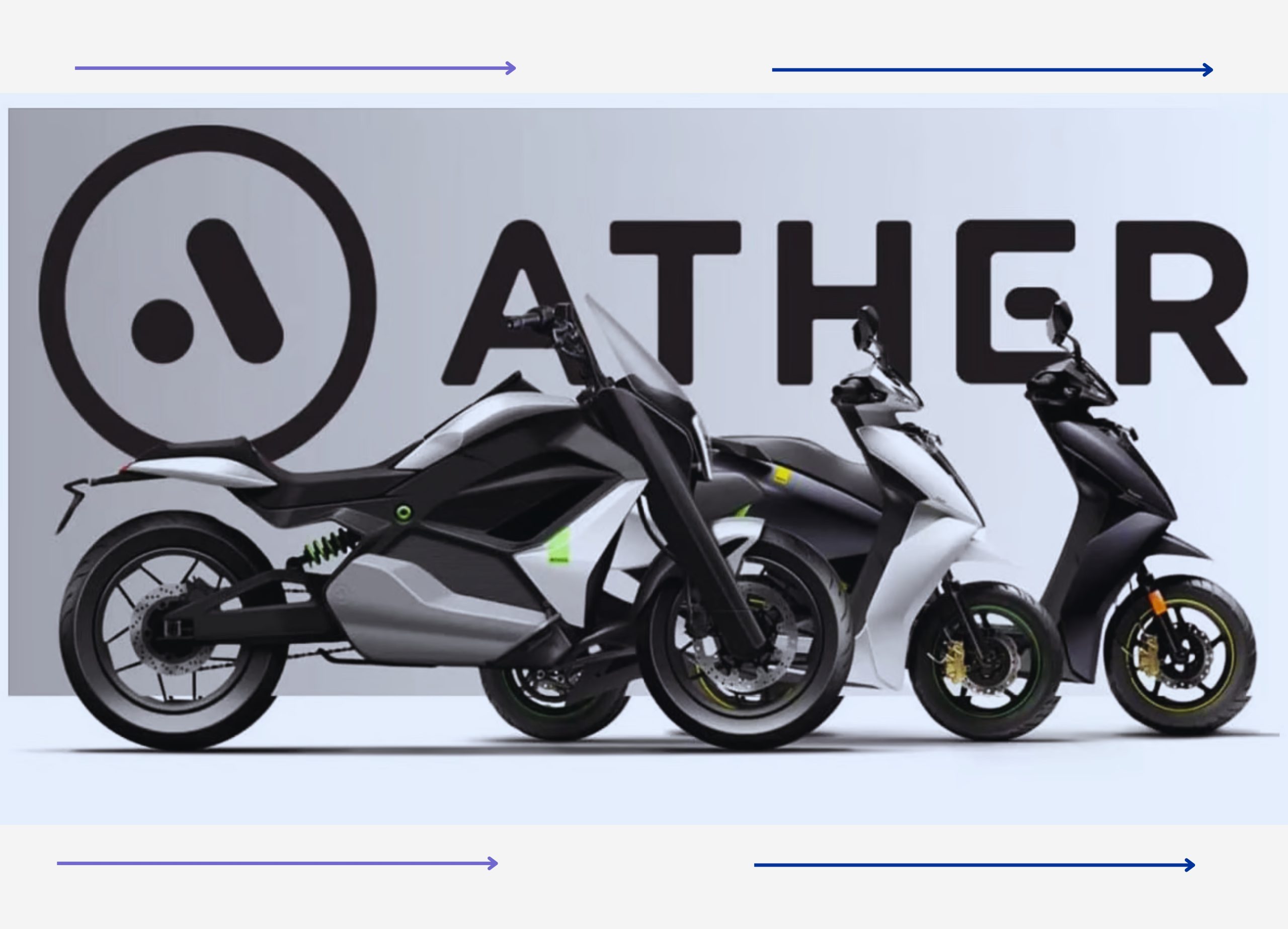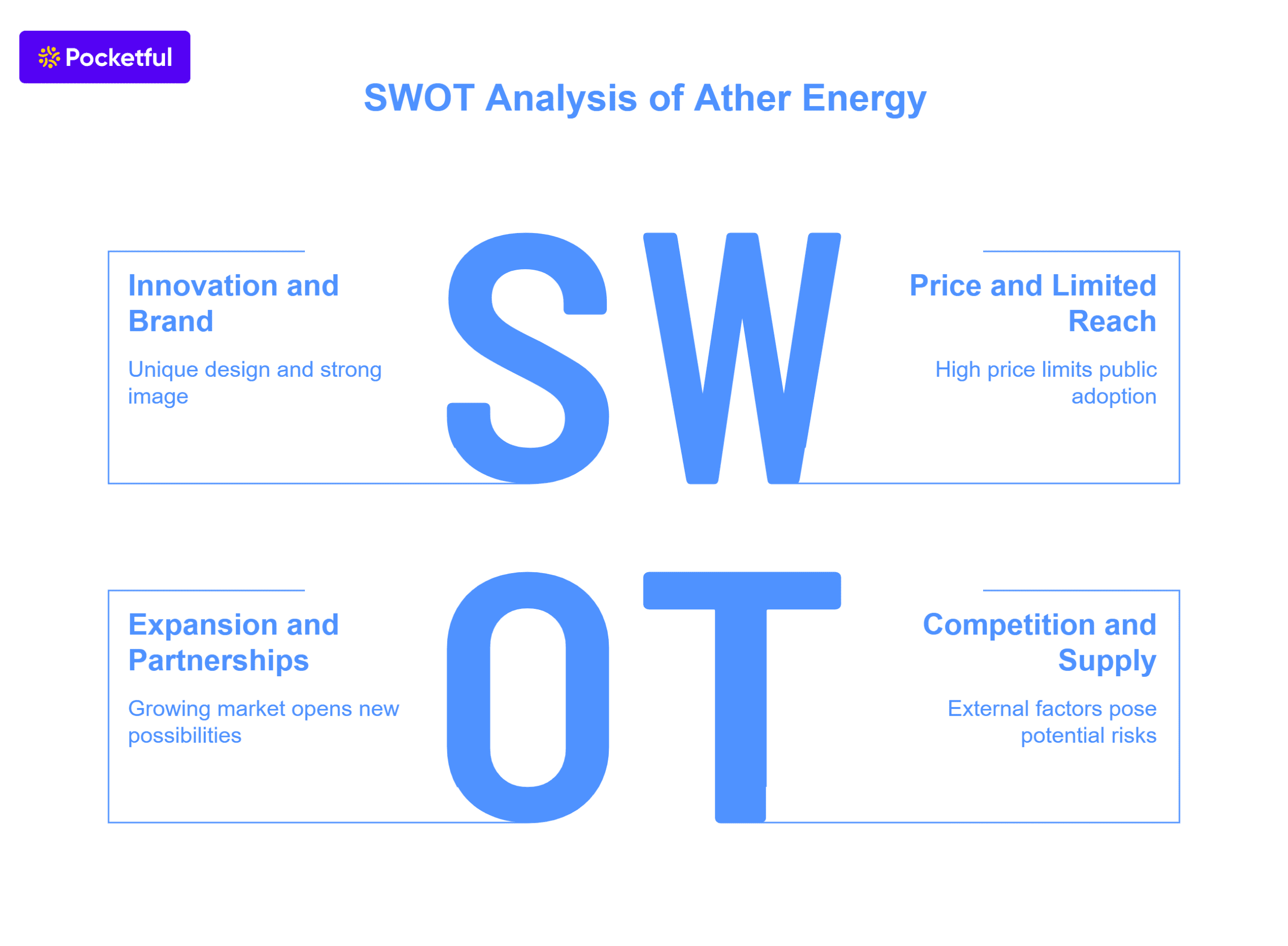| Type | Description | Contributor | Date |
|---|---|---|---|
| Post created | Pocketful Team | May-01-25 |
Read Next
- What Is Quick Commerce? Meaning & How It Works
- Urban Company Case Study: Business Model, Marketing Strategy & SWOT
- Rapido Case Study: Business Model, Marketing Strategy, Financial, and SWOT Analysis
- Trump Tariffs on India: Trade vs Russian Oil
- NTPC vs Power Grid: Business Model, Financials & Future Plans Compared
- Exxaro Tiles Vs Kajaria Tiles
- Adani Power Vs Adani Green – A Comprehensive Analysis
- Blinkit vs Zepto: Which is Better?
- UltraTech Vs Ambuja: Which is Better?
- Tata Technologies Vs TCS: Which is Better?
- Tata vs Reliance: India’s Top Business Giants Compared
- HCL Vs Infosys: Which is Better?
- Wipro Vs Infosys: Which is Better?
- Voltas vs Blue Star: Which is Better?
- SAIL Vs Tata Steel: Which is Better?
- JK Tyre Vs CEAT: Which is Better?
- Lenskart Case Study: History, Marketing Strategies, and SWOT Analysis
- Parle Case Study: Business Model, Marketing Strategy, and SWOT Analysis
- Tata Motors Vs Ashok Leyland: Which is Better?
- Apollo Tyres Ltd. vs Ceat Ltd. – Which is better?
- Blog
- ather energy case study
Ather Energy Case Study: Business Model, Financials, and SWOT Analysis

Ather Energy offers modern electric scooters that come with advanced technology to attract customers looking for sustainable and smart mobility solutions. From their eye-catching design to advanced features and the growing network of charging stations, Ather is a name that’s gaining popularity in the EV space.
In this blog, we will learn about how they’re revolutionizing the EV space and their strengths. Furthermore, we will analyze their business model, risks, and the marketing strategy they use to keep their customer base growing.
Ather Energy: An Overview
Ather Energy is an Indian startup that’s reimagining what electric scooters can be. They’re not just building EVs, but are making them smart, stylish, and internet-connected two-wheelers that are fun to ride and good for the planet. From the sleek design to the technology-packed dashboard and even their charging network (called Ather Grid), they’ve built everything in-house with a clear focus on quality and user experience.
Their scooters, such as the Ather 450S, 450X, and the high-performance 450 Apex, have a futuristic design, great performance, and make city commutes easy and convenient.

A Brief History
A brief history of the Ather Energy is given below:
- 2013: Ather was started by two IIT Madras graduates, Tarun Mehta and Swapnil Jain, who wanted to build India’s first truly smart electric scooter. It was a forward-thinking idea, as EVs are eco-friendly, but they hadn’t gained popularity at the time.
- 2014–2015: After getting support from IIT Madras and early investors (including Flipkart’s founders), Ather started to pick up steam. Hero MotoCorp also came on board, giving them a strong boost.
- 2018: After years of research and hard work, Ather launched its first scooters, the Ather 340 and Ather 450, in Bangalore. These weren’t your average scooters as they had touchscreen dashboards, onboard navigation, and were connected to the cloud, which attracted people’s attention.
- 2020: Enters the Ather 450X: faster, smarter, and more powerful. Ather began expanding beyond Bangalore and brought its scooters to other cities across India.
- 2021–2023: Ather kept growing, opening new showrooms (they call them “Experience Centres”) and expanding their charging network. They also rolled out Over-The-Air (OTA) software updates for your scooter, just like your smartphone.
At its core, Ather is all about changing the way we move. They’re building electric scooters that people want to ride, not just because they’re sustainable, but because they’re fun, fast, and packed with tech. It’s the kind of company that’s not just thinking about the next scooter; instead, they’re thinking about the future of commuting.
Read Also: Ola Electric Case Study: Business Model, Financials, and SWOT Analysis
Business Model of Ather Energy
The business model of Ather Energy can be summarized in the following 5 points:
1. Direct Sales of Smart Electric Scooters
This is the core of their business. Ather designs and manufactures electric scooters like the 450S, 450X, and 450 Apex, and sells them through:
- Company-owned Experience Centres
- Franchise-owned retail outlets
- Online platform (you can book a test ride or buy directly)
They focus on premium, technology-heavy scooters that attract urban commuters who want performance and sustainability in one.
2. Ather Grid – Charging Infrastructure
Ather has built its public charging network called Ather Grid, which is available in multiple cities. It was free to use initially, but currently Ather charges ₹1/min + GST. This helps support not just Ather owners, but eventually the wider EV community too.
3. Subscriptions & Services
Ather offers monthly plans for smart features on its scooters, including:
- Navigation
- Remote diagnostics
- Ride statistics
- OTA (Over-the-Air) software updates
- Ather Connect app access
These plans range from basic to pro-level, giving users a choice and recurring revenue for the company.
4. After-Sales & Servicing
They run a strong after-sales network with doorstep service options and maintenance plans. Customers can sign up for;
- Annual service packages
- Extended warranty
- Roadside assistance
5. Strategic Partnerships & B2B Opportunities
Ather also explores:
- Partnerships with corporates, delivery fleets, and tech platforms
- Collaborations with governments for EV adoption incentives
- EV financing and insurance tie-ups through third parties
Read Also: Suzlon Energy Case Study: Business Model, Financial Statement, SWOT Analysis
Marketing Strategy of Ather Energy
1. Experience-First Marketing
Instead of hard selling, Ather focuses on letting people experience the product:
- They’ve built “Experience Centres” in cities across India—not just showrooms but interactive spaces where people can test-drive, explore the tech, and learn about EVs.
- Test rides are important to convert potential customers. Once people try the scooter, they often get hooked on the performance and features.
2. Strong Brand Positioning
Ather positions itself as:
- Premium but not luxury
- Tech-driven and futuristic
- Sustainable without being preachy
3. Content & Digital Marketing
Ather is heavy on content, using platforms like YouTube, Instagram, and LinkedIn to:
- Showcase real user stories
- Share product explainer videos
- Post behind-the-scenes R&D and software updates
- Educate the public on EVs and sustainability
They make complex concepts, such as battery efficiency and range, easy to understand and fun to follow.
4. Word-of-Mouth & Community Building
Ather has cultivated a passionate user base that spreads the word:
- They host community rides, events, and meetups
- There’s even a name for their fanbase—“Ather Community”
- Existing users often act as unofficial brand ambassadors
They also listen closely to customer feedback, which builds trust and loyalty.
5. Localized Launch Campaigns
When entering new cities, Ather runs targeted marketing campaigns that combine:
- Outdoor ads (billboards, bus stops, metro stations)
- Digital ads focused on local demographics
- Local influencer collaborations and test ride events
Financials Analysis of Ather Energy
Income Statement
| Particulars | FY 2024 | FY 2023 | FY2022 |
|---|---|---|---|
| Total Income | 1,789.10 | 1,801.80 | 413.8 |
| Total Expenses | 2,674.20 | 2,666.30 | 757.9 |
| Loss for the Year | -1,059.70 | -864.5 | -344.1 |
Balance Sheet
| Particulars | FY 2024 | FY 2023 | FY 2022 |
|---|---|---|---|
| Total Non-Current Assets | 684.1 | 668.5 | 526.1 |
| Total Current Assets | 1229.4 | 1308.3 | 292.5 |
| Non-Current Liabilities | 291.2 | 343.6 | 199.3 |
| Current Liabilities | 1076.4 | 1019.5 | 394.4 |
Cash Flow Statement
| Particulars | FY 2024 | FY 2023 | FY2022 |
|---|---|---|---|
| Net Cash Used in Operating Activities | -267.60 | -871.30 | -228.4 |
| Net Cash Used in Investing Activities | -228.10 | -135 | -6.6 |
| Net Cash Generated from Financing Activities | 633.2 | 1,317.40 | 230.7 |
Important Highlights
- Profitability: The company remains in a loss-making phase, but the narrowing losses in FY24 are a positive sign.
- Cash Flow Concerns: The increasing cash burn and rising debt levels highlight the need for prudent financial management.
- Market Dynamics: Ather’s market share has slightly declined, indicating intensified competition in the E2W segment.
- Strategic Investments: The IPO funds are meant for expansion and innovation, which are critical for long-term growth.
SWOT Analysis of Ather Energy

Strengths
- In-house innovation: Ather designs and builds most of its components, such as batteries, software, and dashboards, which gives it better quality control and a unique product.
- Strong brand image: Seen as premium, tech-savvy, and futuristic, it is one of the few EV brands in India that is well-known.
- Smart features & connectivity: OTA updates, touchscreen dashboards, app integration, these things make Ather scooters feel like the “iPhones of EVs.”
- Ather Grid charging network: Building its fast-charging network gives Ather a big edge in convenience and customer loyalty.
- Loyal customer base: Ather has created a passionate community of users who often promote the brand through word-of-mouth.
Weaknesses
- Higher price point: Compared to traditional scooters or entry-level EVs, Ather scooters are pricey, which can limit public adoption.
- Limited service & retail network (in some areas): Despite expanding fast, Ather still doesn’t have the reach of legacy two-wheeler brands.
- Dependence on urban markets: The product positioning is heavily tailored around urban, tech-forward consumers, and is not as appealing in rural or price-sensitive markets.
- Production scale limitations: Compared to giants like Hero or Bajaj, Ather still has a relatively small manufacturing footprint.
Opportunities
- Expanding into Tier 2 & Tier 3 cities: As awareness about sustainability and EV infrastructure improves, these areas are becoming more open to the adoption of EVs.
- Launching more affordable models: A more budget-friendly scooter could open up a much wider customer base.
- Fleet and delivery partnerships: Tapping into B2B use (like food delivery or ride-share fleets) can boost volume and visibility.
- Global expansion: Ather has the potential to enter Southeast Asia or Africa, where EV two-wheelers are starting to gain traction.
- Government policies & incentives: Ongoing support for EVs (like FAME II) helps reduce prices and boost demand.
Threats
- Tough competition: Legacy brands (like TVS, Bajaj, Ola Electric, and Hero) are now in the EV race with huge budgets and distribution power.
- Policy changes: If government subsidies are reduced or withdrawn, prices may rise, and demand could slow.
- Battery/raw material supply chain issues: Global shortages or rising costs of lithium and other EV materials could impact production.
- Customer expectations rising fast: As EV adoption grows, customers expect faster charging, longer range, and lower prices, which makes staying ahead a constant challenge.
Read Also: Tata Motors Case Study: Business Model, Financials, and SWOT Analysis
Conclusion
Ather Energy has created a unique space for itself in India’s electric vehicle market by focusing on innovation, quality, and smart technology. With its bold design, internet and bluetooth connected features, and strong community of users, Ather has gone beyond just building scooters and helped spark a movement toward smarter, cleaner mobility. While the brand faces tough competition and some challenges, its commitment to continuous improvement and customer experience keeps it ahead on the road to success. If Ather can keep balancing performance, price, and reach, it’s well on its way to becoming a household name in the future of urban transport.
Frequently Asked Questions (FAQs)
How do you charge an Ather scooter?
You can charge at home or use Ather Grid, their fast-charging network available in many cities.
Is Ather more expensive than other scooters?
Yes, it’s priced higher than average, but it offers advanced tech, performance, and low running costs.
Can I buy Ather scooters online?
Yes, you can book online and choose home delivery or pickup from a nearby Ather’s Experience Centre.
When is the Ather Energy IPO open for subscription?
The IPO opened on April 28, 2025, and will close on April 30, 2025.
Is Ather Energy profitable?
No, Ather Energy is currently not profitable. The company plans to use the IPO proceeds to scale operations and reduce debt.
Disclaimer
The securities, funds, and strategies discussed in this blog are provided for informational purposes only. They do not represent endorsements or recommendations. Investors should conduct their own research and seek professional advice before making any investment decisions.
Article History
Table of Contents
Toggle